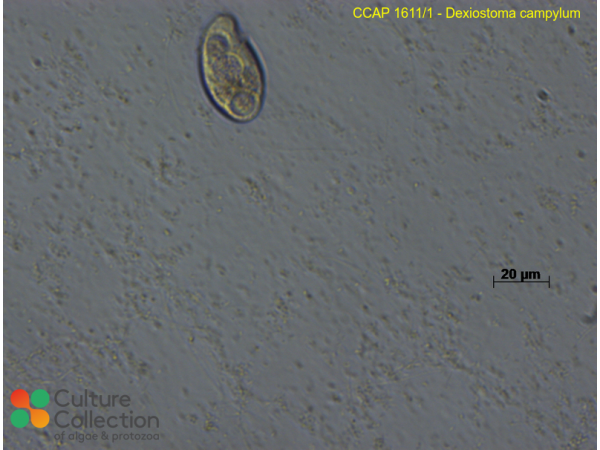Note: for strains where we have DNA barcodes we can be reasonably confident of identity, however for those not yet sequenced we rely on morphology
and the original identification, usually made by the depositor. Although CCAP makes every effort to ensure the correct taxonomic identity of strains, we cannot guarantee
that a strain is correctly identified at the species, genus or class levels. On this basis users are responsible for confirming the identity of the strain(s) they receive
from us on arrival before starting experiments.
For strain taxonomy we generally use AlgaeBase for algae and
Adl et al. (2019) for protists.
| Attributes | |
| Authority | (Stokes) Jankowski 1967 |
| Isolator | Unknown (pre 1990) |
| Collection Site | Unknown |
| Notes | The history of this strain is unclear, the depositor noted that it was gained from the University of Münster, Germany in 1990, and was then cultured in the University of Tübingen, Germany and used as food for other organisms. Immediately prior to deposit in CCAP the culture was maintained at the University of Jena, Germany. Can also be grown in SES medium with 2 boiled wheat grains. |
| Axenicity Status | Bacteria present |
| Country | Unknown |
| Environment | Unknown |
| GMO | No |
| Group | Protozoa |
| In Scope of Nagoya Protocol | No |
| ABS Note | Collected pre Nagoya Protocol. No known Nagoya Protocol restrictions for this strain. |
| Collection Date | pre 1990 |
| Pathogen | Not pathogenic: Hazard Class 1 |
| Strain Maintenance Sheet | SM_Dexiostomacampylum.pdf |
| Toxin Producer | Not Toxic / No Data |
| Type Culture | No |
| Taxonomy WoRMS ID | |
| Synonyms | Colpidium striatum Stokes , Glaucoma colpidium Schewiakoff |

